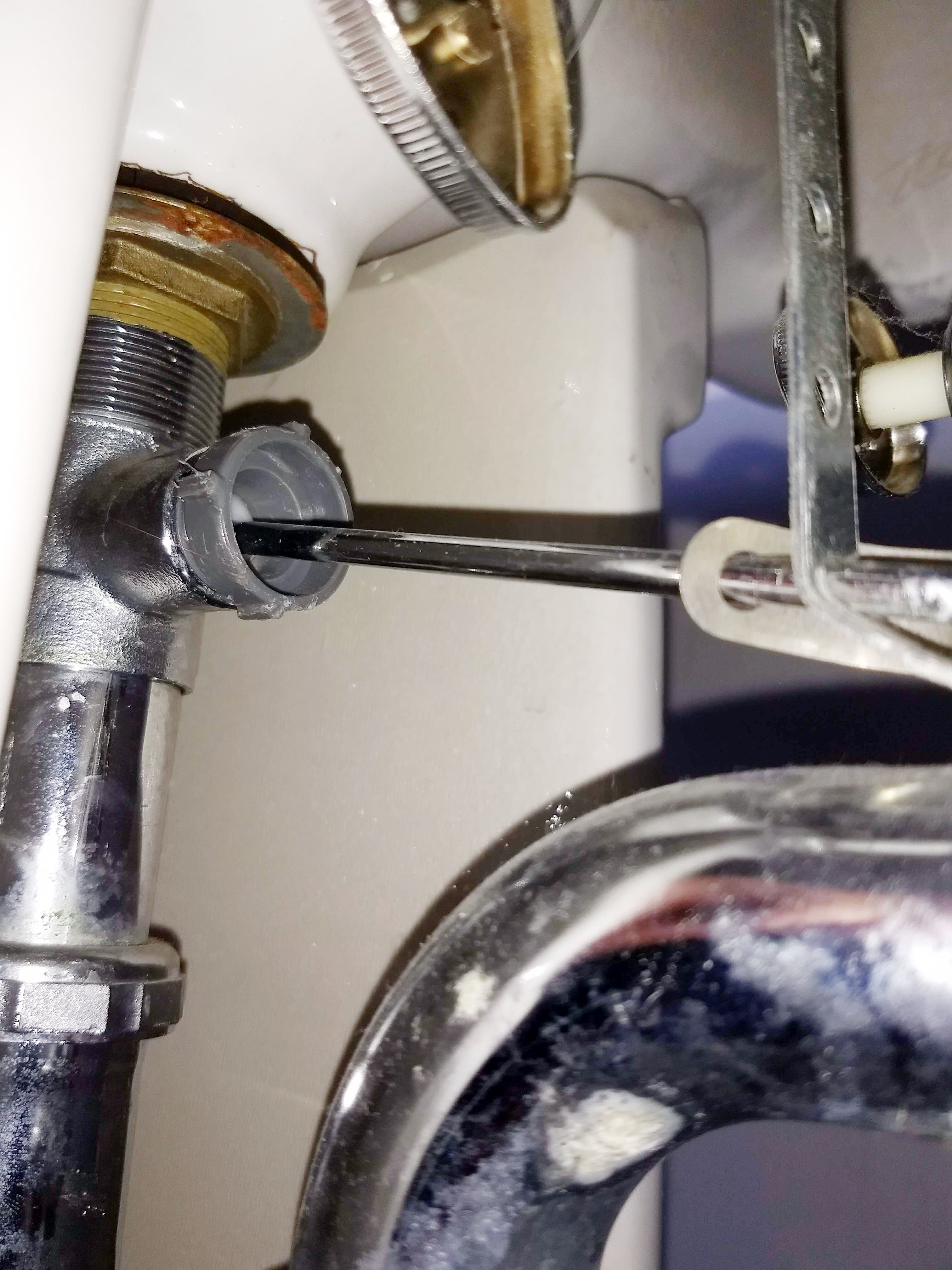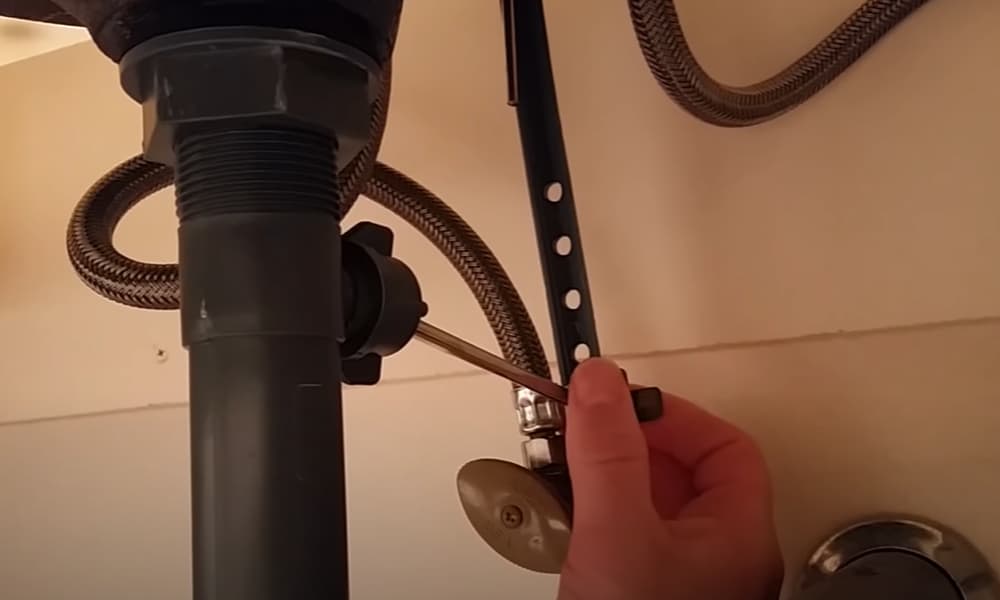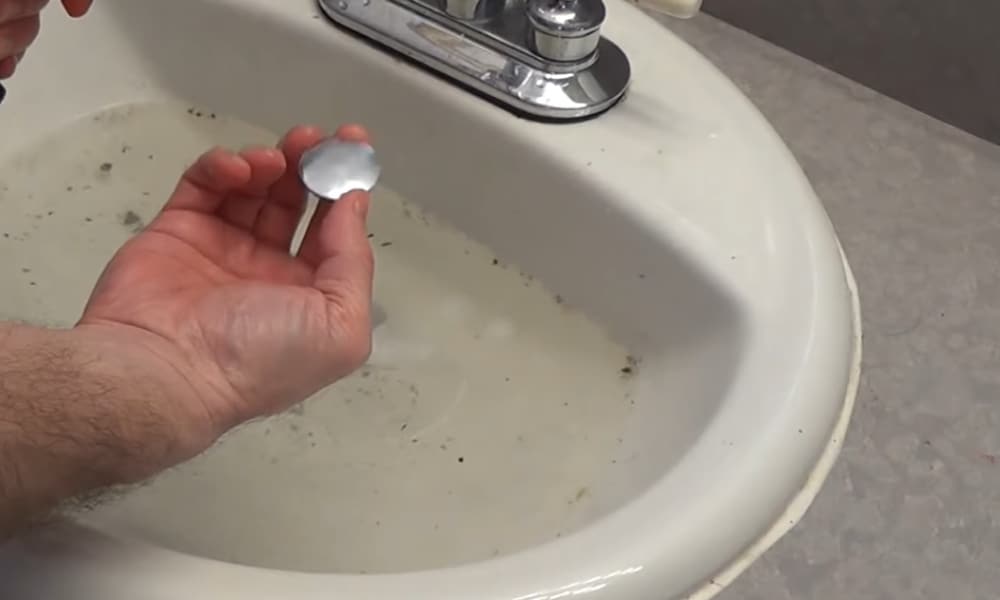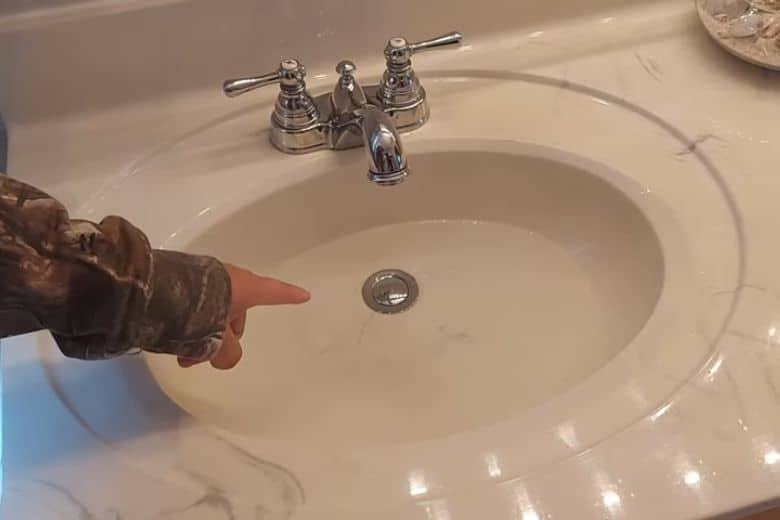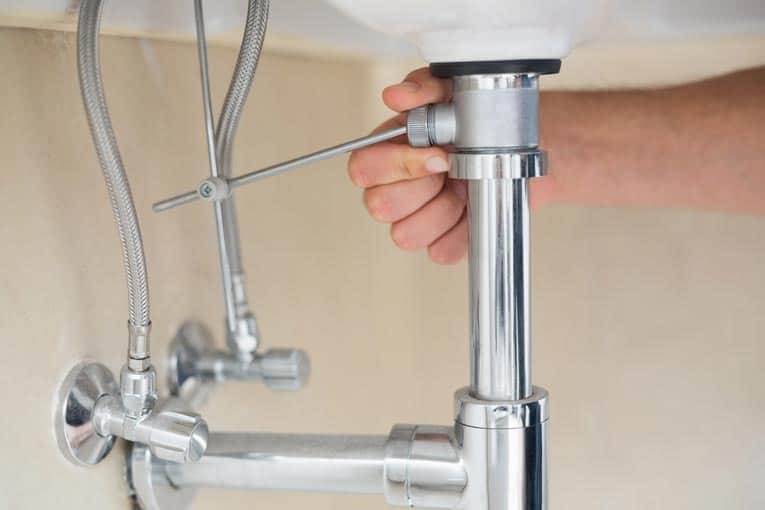Dealing with a clogged bathroom sink can be a frustrating and messy experience. It's even more frustrating when you've tried everything you can think of and the sink still won't unclog. But don't worry, there are some simple steps you can take to fix a clogged bathroom sink that just won't budge. First, try using a plunger to dislodge the blockage. Make sure the sink is filled with enough water to cover the plunger and create a seal. Then, push and pull the plunger vigorously to create suction and pressure that can loosen and remove the clog. If the plunger doesn't work, try using a drain snake or auger. This tool can reach deep into the pipes and physically remove the blockage. Insert the snake into the drain and rotate it while pushing it further in. Once you feel resistance, rotate the snake to break up the clog and pull it out. Another option is to use a mixture of baking soda and vinegar. Pour half a cup of baking soda down the drain, followed by half a cup of vinegar. Let it sit for 30 minutes, then pour hot water down the drain to flush out the mixture and hopefully, the clog. This method is best for minor clogs and may need to be repeated a few times for tougher clogs. If none of these methods work, it's time to call a professional plumber. They have the tools and expertise to deal with stubborn clogs and can also inspect your pipes for any potential issues. It may cost more, but it's worth it to have a properly functioning bathroom sink. How to Fix a Clogged Bathroom Sink That Won't Unclog
A common cause of a clogged bathroom sink is a dirty or blocked sink stopper. If water is draining slowly or not at all, it's a good idea to remove the stopper for cleaning. Here's how: First, locate the rod underneath the sink that connects to the sink stopper. Unscrew the nut and set it aside. Next, pull out the rod and the sink stopper should come out easily. Once the stopper is removed, clean it thoroughly with soap and water. You can also use a toothbrush to scrub away any buildup or grime. While the stopper is out, use a small brush or pipe cleaner to clean out the drain and remove any debris that may be causing the clog. After cleaning, reinsert the stopper and rod and screw the nut back in place. Test the sink by running water to see if it drains properly. If not, you may need to try another method or call a plumber for further assistance. How to Remove a Bathroom Sink Stopper for Cleaning
If your bathroom sink won't drain, there may be an issue with the drain itself. Here are a few troubleshooting tips to help you identify and fix the problem: First, check the sink stopper to make sure it's functioning properly. If it's stuck in the closed position, it may be blocking the drain and preventing water from draining properly. Follow the steps outlined in the previous section to remove and clean the stopper. Next, check the pipes under the sink for any clogs or buildup. You can use a pipe wrench to loosen and remove the pipes to clean them out. Be sure to have a bucket or towel handy to catch any water that may spill out. If the pipes are clear and the stopper is working, the issue may be further down the drain. A plumber's snake or auger can help to dislodge and remove any blockages in the pipes. If you're not comfortable using these tools, it's best to call a professional plumber for assistance. Troubleshooting a Bathroom Sink That Won't Drain
If you're looking for a more environmentally friendly and chemical-free way to unclog your bathroom sink, there are a few options you can try. These methods are also safe for septic systems, which can be damaged by harsh chemicals. One method is using a combination of salt and baking soda. Mix equal parts of both and pour the mixture down the drain. Let it sit for 15 minutes, then follow with hot water to flush out the clog. You can also add a cup of vinegar to create a foaming action that can help break up the clog. Another option is using a wet/dry vacuum. Set the vacuum to the wet setting and place the nozzle over the drain. Turn it on and let it run for a few minutes to suck out the clog. This method may not work for larger or tougher clogs, but it's worth a try for minor blockages. How to Unclog a Bathroom Sink Without Chemicals
If you've tried everything to unclog your bathroom sink and the drain is still stuck, you may need to remove it for further cleaning or to replace it entirely. Here are some tips to help you remove a stuck drain: First, try using a pair of pliers to grip the drain and twist it counterclockwise to loosen it. If that doesn't work, you can try using a drain wrench or a drain removal tool. These tools are specifically designed to grip and remove stuck drains. If all else fails, you may need to call a professional plumber. They have the tools and expertise to remove a stuck drain without damaging your sink or pipes. Tips for Removing a Stuck Bathroom Sink Drain
A slow-draining bathroom sink can be a nuisance, but it's important to identify the cause in order to properly fix the issue. Here are some common causes of a slow-draining sink: Hair and soap scum buildup are the most common culprits of a slow-draining sink. These substances can easily accumulate in the pipes and create a blockage. To prevent this, use a drain cover to catch hair and regularly clean the sink stopper and pipes. Another cause could be a venting issue. If there isn't enough air flow in the pipes, it can slow down the draining process. A plumber can inspect and fix any venting issues to improve the drainage. Older pipes may also be a factor. Over time, pipes can corrode and become narrower, making it harder for water to flow through. In this case, you may need to replace the pipes for better drainage. Common Causes of a Slow-Draining Bathroom Sink
A leaky bathroom sink drain is not only annoying, but it can also cause water damage and waste water. Here's how you can fix a leaky drain: First, make sure the leak is coming from the drain and not the faucet. If it's the drain, you may need to replace the rubber gasket or putty around the drain to create a better seal. You can also try tightening the nuts or bolts that hold the drain in place. If the leak is coming from the pipes, you may need to replace them. Make sure to turn off the water supply before attempting to replace the pipes. If you're not comfortable doing this yourself, it's best to call a professional for assistance. How to Fix a Leaky Bathroom Sink Drain
If you're dealing with a clogged bathroom sink, there are some DIY solutions you can try before calling a plumber. These methods use household items and are safe for your pipes and septic system. One method is using a mixture of dish soap and hot water. Pour a few tablespoons of dish soap down the drain, followed by a pot of hot water. Let it sit for a few minutes, then run hot water to flush out the clog. Another option is using a combination of salt, baking soda, and vinegar. Pour half a cup of salt down the drain, followed by half a cup of baking soda. Then, pour half a cup of vinegar down the drain. Let it sit for 30 minutes, then follow with hot water. These methods may need to be repeated a few times for tougher clogs, but they are effective and chemical-free. DIY Solutions for a Clogged Bathroom Sink
If your bathroom sink has a pop-up drain stopper, it's important to know how to remove it for cleaning or replacement. Here's how to do it: First, locate the pivot rod underneath the sink. Unscrew the nut and pull out the rod. Next, reach behind the sink and unscrew the nut that holds the stopper in place. Once the nut is removed, you can pull out the stopper from the top of the sink. Clean the stopper and the drain opening thoroughly, then replace the stopper and tighten the nut. Insert the pivot rod back into place and screw the nut back on. Test the stopper to make sure it's functioning properly. How to Remove a Bathroom Sink Pop-Up Drain Stopper
If you're dealing with a clogged bathroom sink, there are some simple tricks you can try before resorting to more drastic measures. Here are a few ideas: First, try using a wire hanger to loosen and remove the clog. Straighten out the hanger and bend one end into a small hook. Insert the hook into the drain and use it to pull out any debris or hair that may be causing the clog. Another option is using a combination of baking soda and salt. Pour half a cup of each down the drain, followed by a pot of hot water. Let it sit for 30 minutes, then flush with hot water. This method can help to break up and remove minor clogs. If these methods don't work, it's time to call a professional plumber for assistance. They have the tools and expertise to handle even the toughest clogs. Simple Tricks for Unclogging a Bathroom Sink
Why You Can't Unclog the Bathroom Sink: Understanding the Importance of Proper House Design

When it comes to designing our homes, we often focus on the aesthetics and functionality of our living spaces. However, we tend to overlook one crucial aspect: the plumbing system. The bathroom sink, in particular, is an essential component that is often taken for granted until it becomes clogged and uncrewable. But have you ever wondered why this happens? The answer lies in the design of your house.
The Importance of Proper House Design

Proper house design goes beyond just making your living space look visually appealing. It also involves careful planning and consideration of the placement and functionality of various elements, including the plumbing system. A well-designed plumbing system is crucial in ensuring that water flows smoothly and efficiently throughout your house, including your bathroom sink.
When a house is not designed with plumbing in mind, it can lead to issues such as clogged drains and uncrewable bathroom sinks. This is because the pipes and fixtures may not be properly aligned, causing water to flow in the wrong direction and accumulate debris and other substances, leading to clogs. Additionally, if the pipes are too narrow or have too many turns, it can also contribute to clogging issues.
The Role of Proper Ventilation

Another crucial aspect of house design that can affect the functionality of your plumbing system is proper ventilation. Adequate ventilation helps to regulate air pressure within the pipes, preventing air pockets and allowing water to flow smoothly. Without proper ventilation, your bathroom sink may become clogged as water struggles to drain due to air pressure issues. This is why it is essential to consider proper ventilation when designing your house.
Furthermore, proper ventilation can also prevent foul odors from emanating from your bathroom sink. Without proper airflow, bacteria and other microorganisms can grow and cause unpleasant smells, making it difficult to use your sink.
In Conclusion
In today's world, where DIY home renovations and design are becoming increasingly popular, it is essential to understand the importance of proper house design, especially when it comes to your plumbing system. By ensuring that your house is designed with plumbing in mind, you can avoid issues like clogged bathroom sinks and enjoy a functional and efficient living space. Remember, a well-designed house is not just about looks; it is about functionality and comfort as well.














